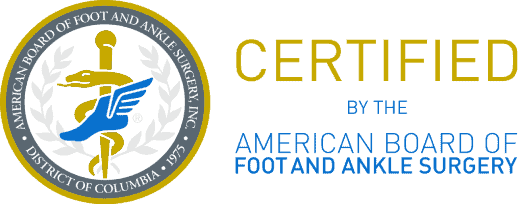Plantar Warts in Children
Symptoms, Causes and Treatment of Pediatric Warts
What Are Plantar Warts?
The main symptom of plantar warts is the growth itself. Plantar warts are usually:
- Small, with a rough or grainy texture
- White, gray, or tan in color, often with black pinpoints (sometimes called wart seeds)
- Hard when they grow inward
- Located near or on a callus
Your child may also feel pain or tenderness in the area around the plantar wart, particularly when standing or walking.
Plantar warts may also form in a cluster. These are sometimes referred to as mosaic warts.
There are many products to treat warts, both over the counter and prescribed, but essentially there are 3 tried and true methods. Dr. Jarman discusses the 3 recommended options and why Cantharidin is the preferred one.
What Causes Plantar Warts in Children?
Plantar warts are caused when HPV enters the body through a weak spot or opening in the skin on the sole of the foot.
There are more than 100 types of HPV; the virus is very common. However, not every type of HPV causes plantar warts. In addition, not everyone who contracts HPV develops warts. Much depends on your child’s immune system.
Risk Factors for Plantar Warts
- Age, with children and teens at greater risk than adults
- Having a weakened immune system
- A history of plantar warts
- Walking barefoot
How to Prevent Plantar Warts
Protect your child’s feet against plantar warts by following these tips:
- Keep feet dry and clean
- Change socks and shoes every day
- Do not walk barefoot around swimming pools or public showers or locker rooms
If your child already has plantar warts, they can prevent the condition from spreading by:
- Not picking at the wart
- Cleaning hands thoroughly after touching their feet
- Using a disposable emery board or buffer around the wart – and not using it anywhere else on the foot

When to See a Pediatric Podiatrist for Plantar Warts
Schedule an appointment with your child’s podiatrist if:
- You aren’t sure whether the lesion is a plantar wart
- Your child is experiencing pain
- The plantar wart is bleeding
- The wart’s appearance or color changes
- Your child has diabetes or poor sensation in their feet
- Your child has a weakened immune system
Never attempt to treat a plantar wart yourself! Due to their inward growth, safe self-treatment is nearly impossible with plantar warts.
Diagnosis and Treatment of Plantar Warts
To diagnose plantar warts, Dr. Jarman begins by examining the child’s foot. He’s looking for common signs of verruca, particularly the dark pinpoints, which are actually tiny blood vessels. The doctor may send a small portion of the lesion, known as a shave biopsy, for testing to verify that it is a plantar wart.
Without treatment, plantar warts last for a year or more. The infection may also spread to other parts of the foot. That’s why Dr. Jarman recommends removal whenever possible.
Plantar Wart Removal
Pediatric Foot & Ankle relies on Cantharidin as a conservative plantar wart removal method. This is applied topically by the doctor and works from the epidermis (skin’s outer layer) inward, causing the wart to separate from surrounding tissue. The process typically takes around two weeks. Dr. Jarman will send you home with care instructions to ensure proper healing.
Children's Plantar Warts FAQ's
Plantar warts are caused by the human papillomavirus (HPV) and are contagious. Transmission occurs by direct contact with wart or picking at wart then touching elsewhere.
Plantar warts develop on the bottoms/soles of the feet as firm, thickened skin with black dots. They can develop singularly or in clusters and are usually painless.
Treatments include over-the-counter salicylic acid, freezing, laser removal, or surgical excision for severe cases. Most resolve within 6-12 months without treatment.
Plantar warts are not considered serious, however they can be painful. Picking can lead to bleeding which increases transmission. Immunocompromised children may need medical care.
Preventing transmission via surfaces and direct contact is key. Never walk barefoot in public areas. Avoid picking or scratching warts. Disinfect home surfaces used by infected individuals.
Your Child's Feet Are Designed For Life



